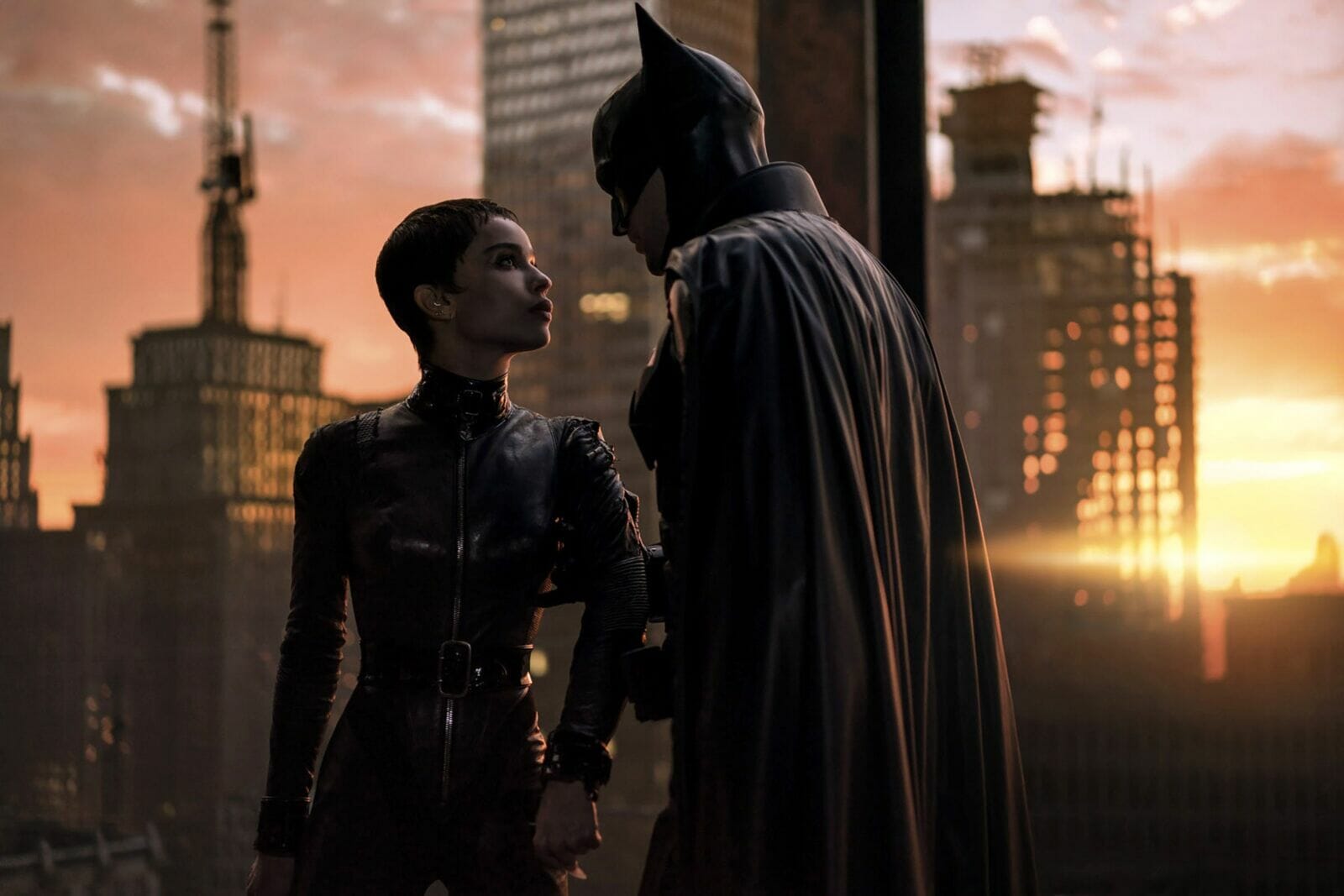Now that superhero movies are the biggest thing in Hollywood (they accounted for a third of all domestic ticket sales last year) and one of the industry’s most contentious topics (a third of all domestic ticket sales is maybe too much), any superhero fare that looks distinctive becomes the hope of nations. Studios will milk the genre dry regardless of quality, so the best we can hope for is a movie that deserves cultural saturation. The latest contender to the throne of sufficiency is The Batman—is it the definite article, or does it just have one?
Signs point to hope. Writer/director Matt Reeves crafted some of the finest blockbusters in recent memory with Dawn of and War for the Planet of the Apes, and his team is coursing with new blood: a prestigious cast, a celebrated cinematographer, and a grungy, grimy vibe that fits the Batman like a cowl. The film’s immediate pleasures are indeed its most ardent. Taking inspiration from Batman: The Long Halloween, a dour, noir-tinged graphic novel, Reeves and company nail the tone immaculately. Not since Batman Returns has Gotham felt so goth. Burton’s version was goth fantastic, as is his wont; Reeve’s is urban goth—grounded, gloomy, and punk. From performance to production design, The Batman is slathered in ominous mood.
READ ALSO: Review: ‘Spider-Man: No Way Home’ is worth celebrating
Pattinson practically secretes it. He and Reeves rejuvenate the character by relinquishing his heroism. He isn’t a complex or tortured hero à la Nolan or Snyder; he’s a withdrawn, violent freak, far more concerned with vengeance than justice. Punishment is his obsession, and Pattinson plays him like a lit fuse. It’s in his body language, which knows no middle ground between restraint and eruption, and in his terse, antisocial attempts at communication. The Maggie Gyllenhaals and Katie Holmeses of the world wouldn’t go near this creep. Several versions of Selina Kyle would, however, so the inclusion of Zoë Kravitz’s furtive Catwoman is a shrewd move.
Also wise was bringing on Greig Fraser, who shoots the absolute hell out of this thing. The man knows when to simmer and when to strike. Its visual pace is not unlike a graphic novel’s: it moves with artistry and purpose, holding periodically on an arresting full-page panel. Some of Fraser’s compositions are stop-in-your-tracks good, and whether he or post-production colorists finalized the palette, the black-and-red aesthetic injects his imagery with lifeblood. A brawl in a nightclub, contrasting a similar scene in The Dark Knight, encapsulates the film’s visual identity. Nolan and Pfister stick to medium shots and illuminate the fight with flashing lights, carving a discernible battle out of the chaos; Reeves and Fraser pull back and let the inky blacks and neon reds swallow the scene, obscuring the struggle just enough to generate tension and fear. Each approach has its merits, but only The Batman taps into the throbbing animalism in place of Bruce Wayne’s heart.
Nolan’s films may not stack up in the style department, but they exceed Reeve’s vision in structure. Despite their flaws, each story in the trilogy builds well, approaching their final acts with palpable anticipation. The Batman doesn’t build so much as it extends. Even if The Riddler’s methods are a guessing game, his motive—punish Gotham’s corrupt elite—is clear from the outset, so the clues he leaves Batman in this ostensible detective story are never psychologically exacting. They’re simply pointers to his next crime, either too obvious or inscrutable to truly puzzle the audience. The film’s tonal accomplishments keep its three hours from dulling, but the plot simply isn’t propulsive enough. In one scene, a monologue delivers a twist with major implications for Bruce’s character, only for the next scene to revise that revelation with a more trustworthy monologue. The film has a way of scurrying back to safe territory after it ventures out.
Its thematic content is similarly lukewarm. There are several analogues to real-life politics: billionaires in bed with criminals, a duplicitous justice system, the rise of violent populism, etc. Its developments of these scenarios are nothing new; its takes on them are risibly simple. These aspects work best in the third act when they’re relegated to window dressing for Gotham’s mayhem. Otherwise, the subtext conflates acknowledgment with exposure, pointing at problems as if they weren’t self-evident. It’s not unlike Joker in that way, though The Batman’s message is nowhere near as muddled. It has a salient point to make about retributive justice—a point that’s spelled out word-for-word in the closing narration. Perhaps some writing cues were taken from The Dark Knight.
The script’s shortcomings keep the film at an emotional remove. It fails to reach the height of its inspirations, never matching the sinking dread of Zodiac or the creeping nihilism of Chinatown. The relationship between Batman and Catwoman is its most poignant element, and the film does well to leave on that note, but not before the requisite sequel-baiting (there are two sequels and two TV spinoffs already in development). For all its strengths, The Batman is a reminder that there’s no great superhero movie without a great screenplay.
★★★½ (3.5/5)




